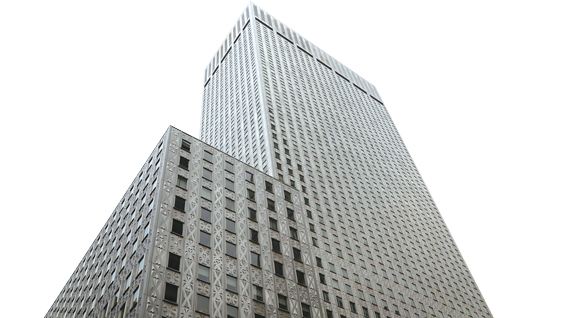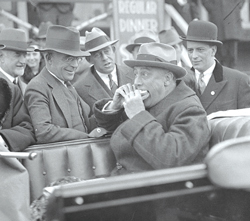Trending
This month in real estate history

1957: Office construction boom transforms face of Midtown
Office towers mushroomed in Midtown following the end of World War II, with 41 major buildings completed between 34th Street and 61st Street, the New York Times reported 60 years ago this month. Among the notable recent arrivals were two that have since gone on to receive landmark status: Lever House on Park Avenue and the United Nations complex along the East River. Meanwhile, another 35 properties were in the pipeline in 1957. They included the Bank of New York Building on Fifth Avenue and the Union Carbide tower on Park Avenue, which today houses the headquarters of JPMorgan Chase & Company. In all, Midtown’s postwar boom promised to add 29 million square feet of office space. Driving construction were rents, which had soared to as much as $7.50 per square foot — double the level of a decade earlier — and demand by the likes of Socony Mobil Oil Company, which took 21 floors in the recently completed eponymous 42-story, $45 million building at 150 East 42nd Street.

Donald Zucker
1981: Developer adds wood-burning fireplaces to light fire under rents
It was 36 years ago this month that developer Donald Zucker announced plans to convert a vacant commercial building at 148 West 23rd Street into a residential rental property in which he would liberally sprinkle his favorite moneymaking amenity, according to the New York Times. Roughly 40 percent of the 114 units would get wood-burning fireplaces. “It’s the single most attractive renting feature after location,” Zucker told the Times. He noted that despite rent of up to $100 more a month, the hearth-equipped apartments always filled up first. More importantly, he calculated that although installing fireplaces on West 23rd Street would add anywhere from $3,000 to $4,000 to his costs, they would pay for themselves in just three years and would keep on paying dividends for decades. Having built more than 1,000 apartments since 1963, Zucker said he planned to put fireplaces in as many units as he could in his new properties at 111 Barrow Street, 22nd Street and Third Avenue, and 81st Street and West End Avenue.

Franklin D. Roosevelt
1997: 110-year-old Pine Street luncheon club wins landmarks nod
Over its 110-year history, the Down Town Association, an exclusive luncheon club, has boasted a host of famous members. Twenty years ago this month, the New York Times reported that the association’s seven-story Romanesque Revival home at 60-64 Pine Street had won fame of its own: designation as an official New York City landmark. The move came as the Landmarks Preservation Commission stepped up efforts to conserve the architectural integrity of Lower Manhattan, bringing the total of such designated properties in the area to 46. A handsome addition to the club, designed by Grand Central’s architect Warren & Wetmore, was completed in 1911. Presidents Grover Cleveland and Franklin D. Roosevelt proudly called themselves members. The building is the oldest clubhouse in the city that was built for and is still occupied by its members. It also ranks as the second oldest such club in the nation (one in Rhode Island is the oldest). The Down Town Association’s new status came 32 years after India House on Hanover Square, former home of another famed downtown club, won landmark status.




